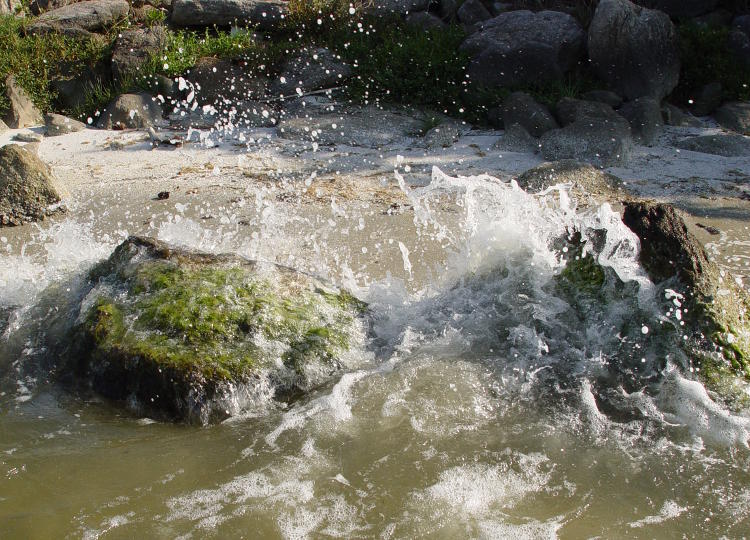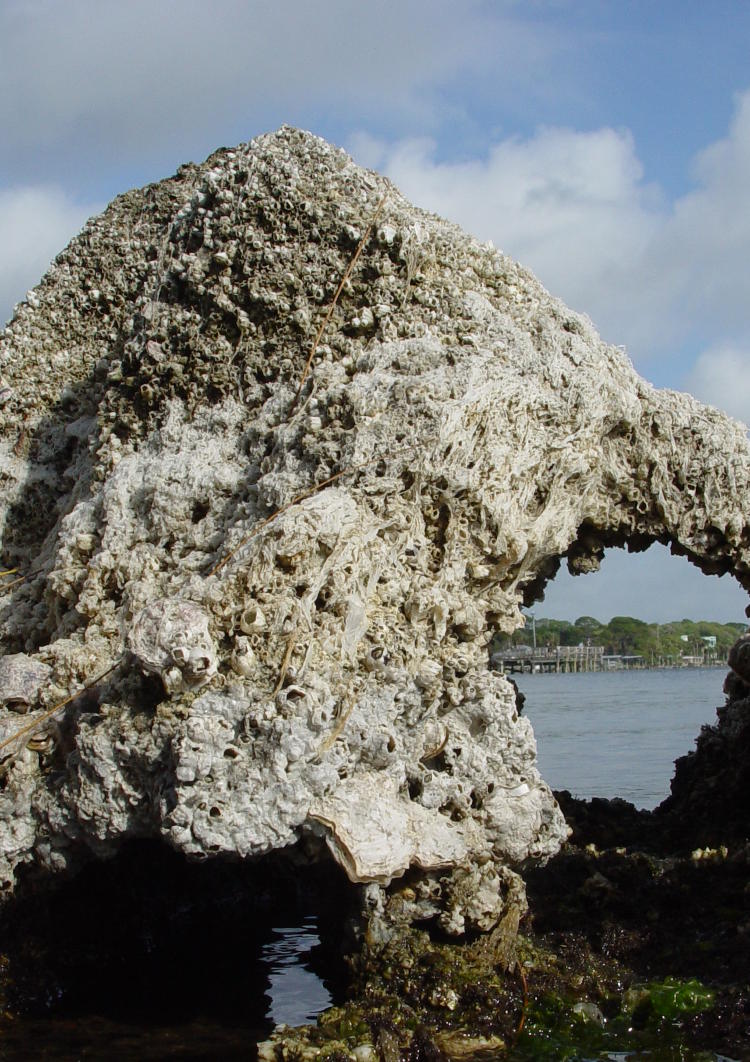
This week’s entry, or entries I guess, come from the Lakes/Streams/Waterfalls folder, categories I had created long before I was using digital. But it’s inaccurate for this, because this is not from a lake, or a stream, or a waterfall. I suppose I should have a Lagoon or Sound category, which would have seemed superfluous when I first created them but became much more useful when I moved very close to the Indian River Lagoon, the largely-saltwater sound between the barrier islands and the mainland (which hardly seems appropriate itself – maybe “mainswamp”) of Florida’s Atlantic coast.
Now, think about this. As a peninsula, Florida has technically two sides: an Atlantic coast (meaning facing the Atlantic Ocean) and a Gulf coast bordering the Gulf of Mexico. But of course it’s all one body of water. For our human naming purposes, supposedly there’s a technical border or differentiation, but where is it? I would think, on initial introspection, that it falls on the southernmost tip of Florida, but Florida doesn’t just point southy, it trails off into the Keys which extend like a trail of bread crumbs mostly to the west. So should we count, like, the southernmost point of Key West to be the border? Or maybe, the westernmost point since it’s a string of islands heading in that direction? Do the southern beaches of, for instance, Vaca Key and Bahia Honda Key still count as bordering the Atlantic? And this says nothing of the variously-named sounds between the Keys and the mainswamp. Is there a point in the middle of the water someplace where you can float splayed out and be in four or five different bodies of water at once? I’m not gonna get any sleep tonight…
[By the way, as you already know I have a Beach category, but I don’t feel these images match that idea too well either, so for now, they’re remaining as they are.]
Where was I? Oh yeah, pics. So, the image above was from a particularly rough and windy day in the very area that I did most of my snorkeling while living in Florida, right off one of the causeways in the Indian River Lagoon. It was far too choppy to try and snorkel, but I was on a photography outing that day anyway, and shot several frames capturing the waves crashing against the rocks. These rocks did not occur naturally there, but were strategically placed as a breakwater and erosion control, and this illustrates why very nicely: the violent impact of the waves would be dissipated against these and not the actual foundations of the causeway visible just a couple of meters beyond, keeping the soil, plants, and supporting rocks therein in better shape.
We don’t think a lot about what’s in the water when we see waves like this, but I can tell you that the Indian River Lagoon is chock full of life. Most of it likely survives getting slammed against the rocks without issue, but I have to believe at least some doesn’t handle the collisions well. The green blankets of seaweed (lagoonweed?) that you see here were actually handy for me, because they blanketed and cushioned the underlying layer of barnacles and oysters that gathered very quickly on any available surface; I could sit on these very boulders and put on my flippers and mask without cutting myself to ribbons, because oysters are extremely sharp, and barnacles only slightly less so.

To illustrate a little better, this rock was from the same location, a few dozen meters away but on a much calmer day.The scale is deceptive: I could, if I was careful (or maybe reckless,) just fit my hand through that hole. I’m not sure any portion of the underlying rock actually shows in the photo – this is all barnacles, oysters, and dried lagoonweed (one oyster is visible hanging off at bottom center, while another mostly-round one can be seen a little above it and to the left.) Such creatures congregate quickly in the lagoon, borne in on the water and attaching themselves as the opportunity arises. Barnacles, in fact, are fascinating little crustaceans, and yes, I have that right – they’re not molluscs, and actually spend the early stages of their live swimming; you really should check them out. The plethora of these hard shells means that even casual contact can produce cuts, and I usually gained a few nicks with each snorkeling trip. And on occasion, more than nicks – I still have a few scars.
I still like the macabre, ‘mountain of skulls’ effect that this angle provides, though. I really should have come back when the clouds were tumultuous and forbidding.



















































